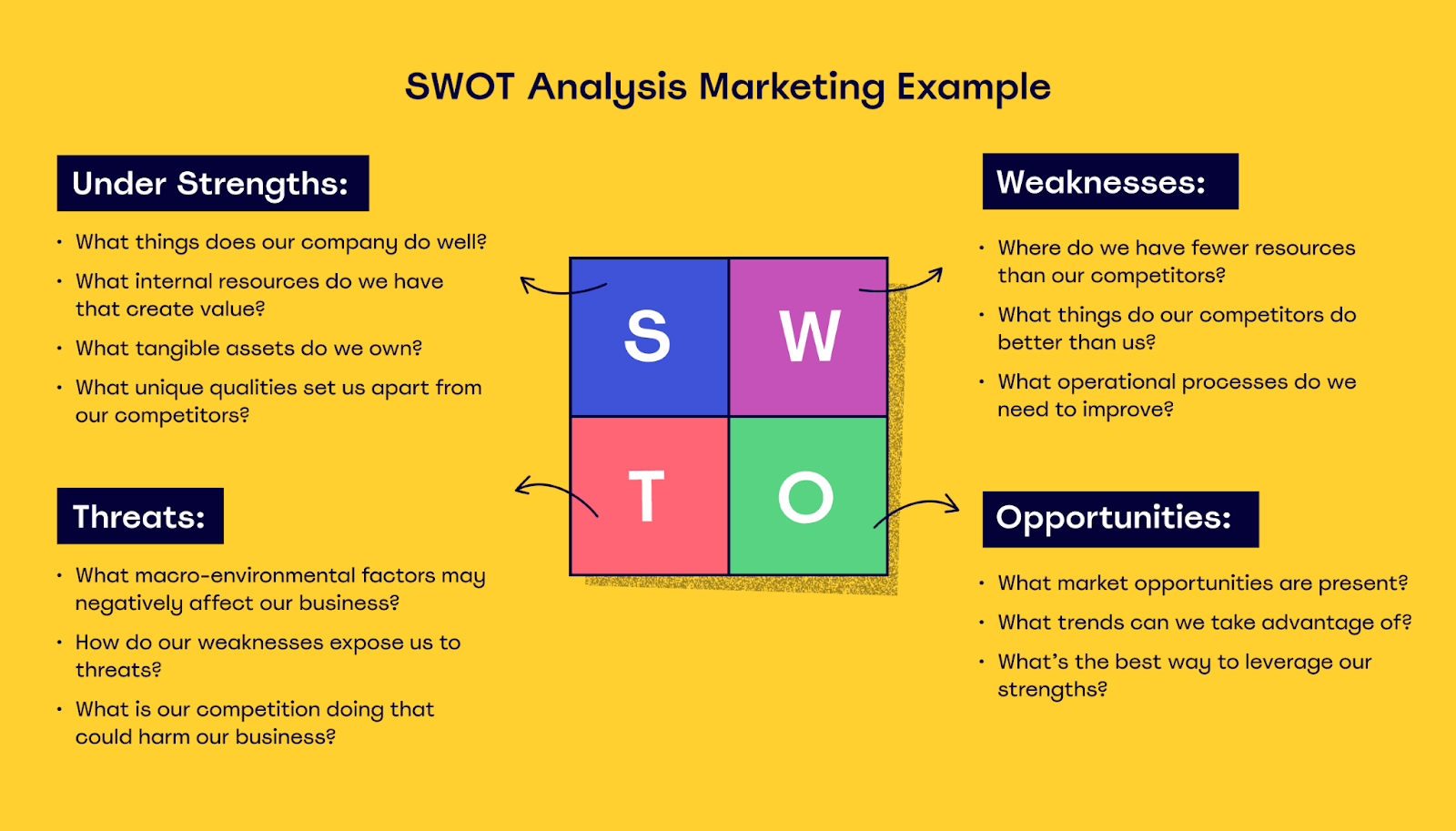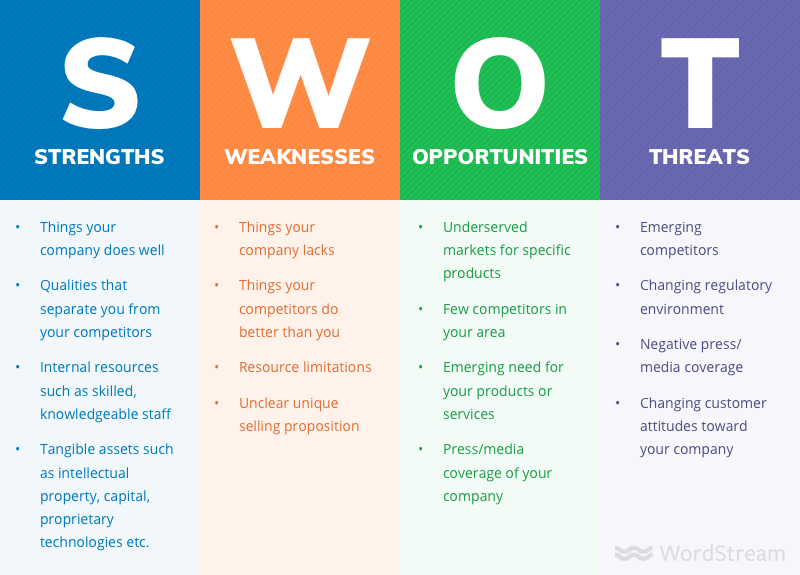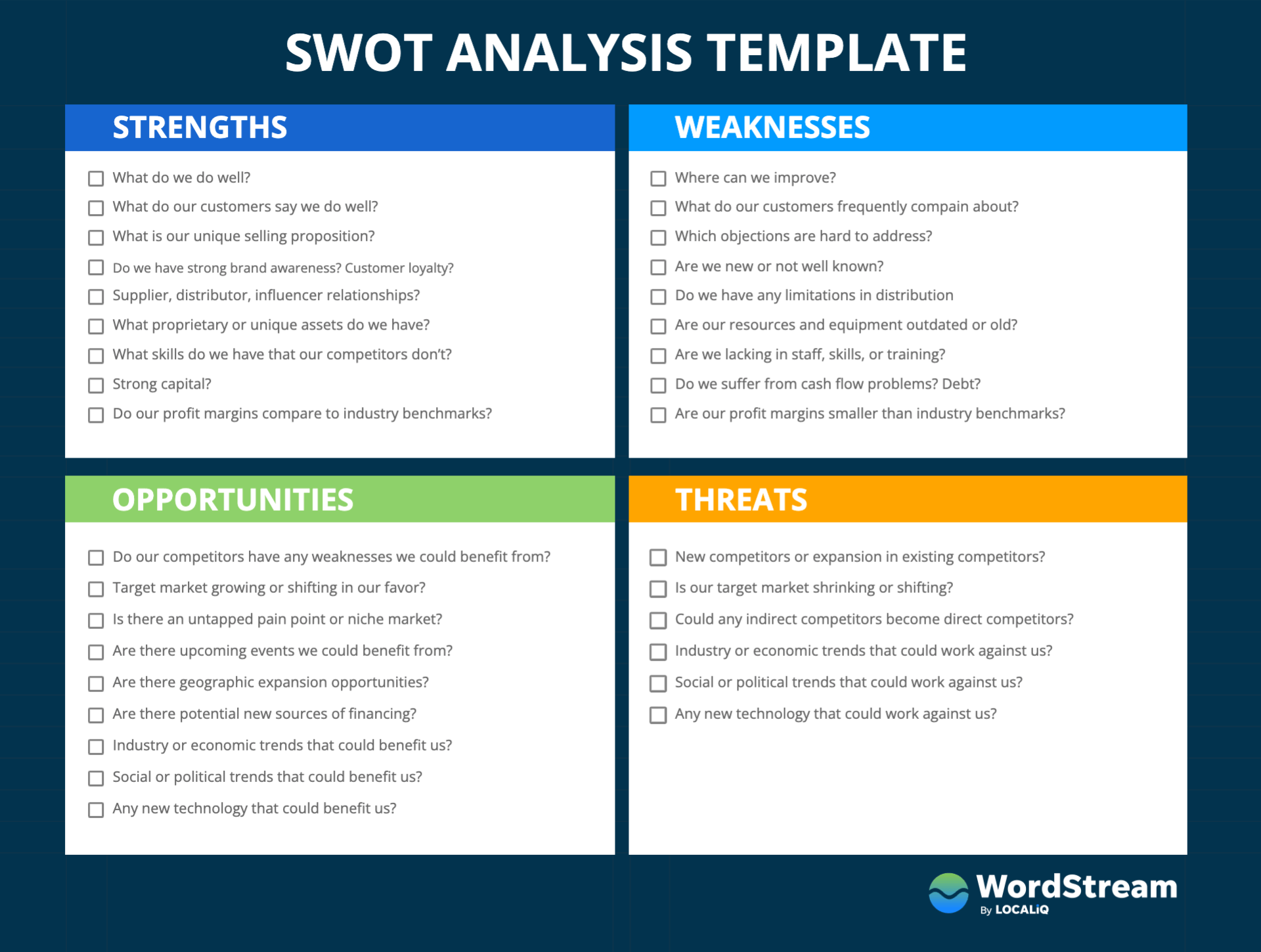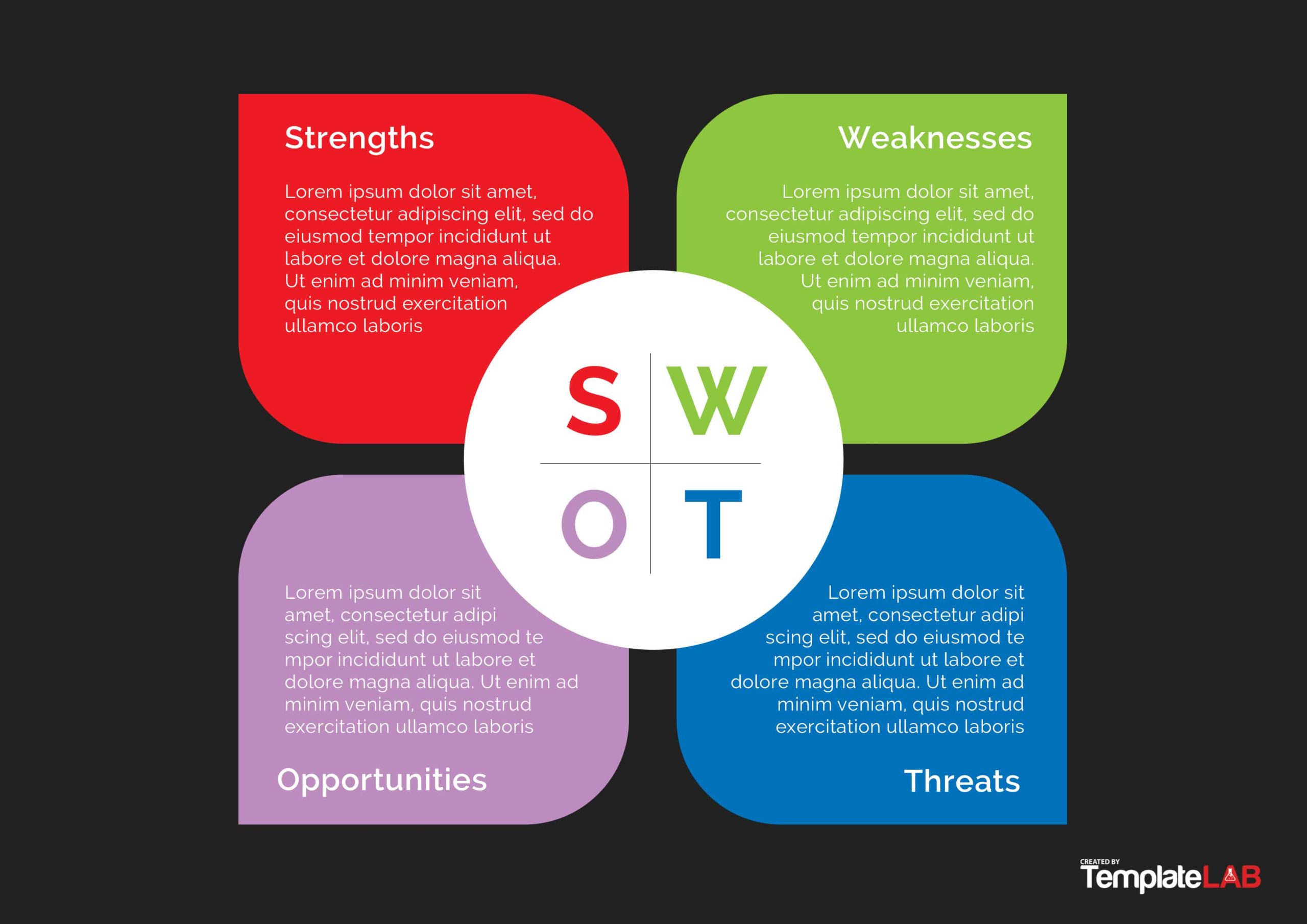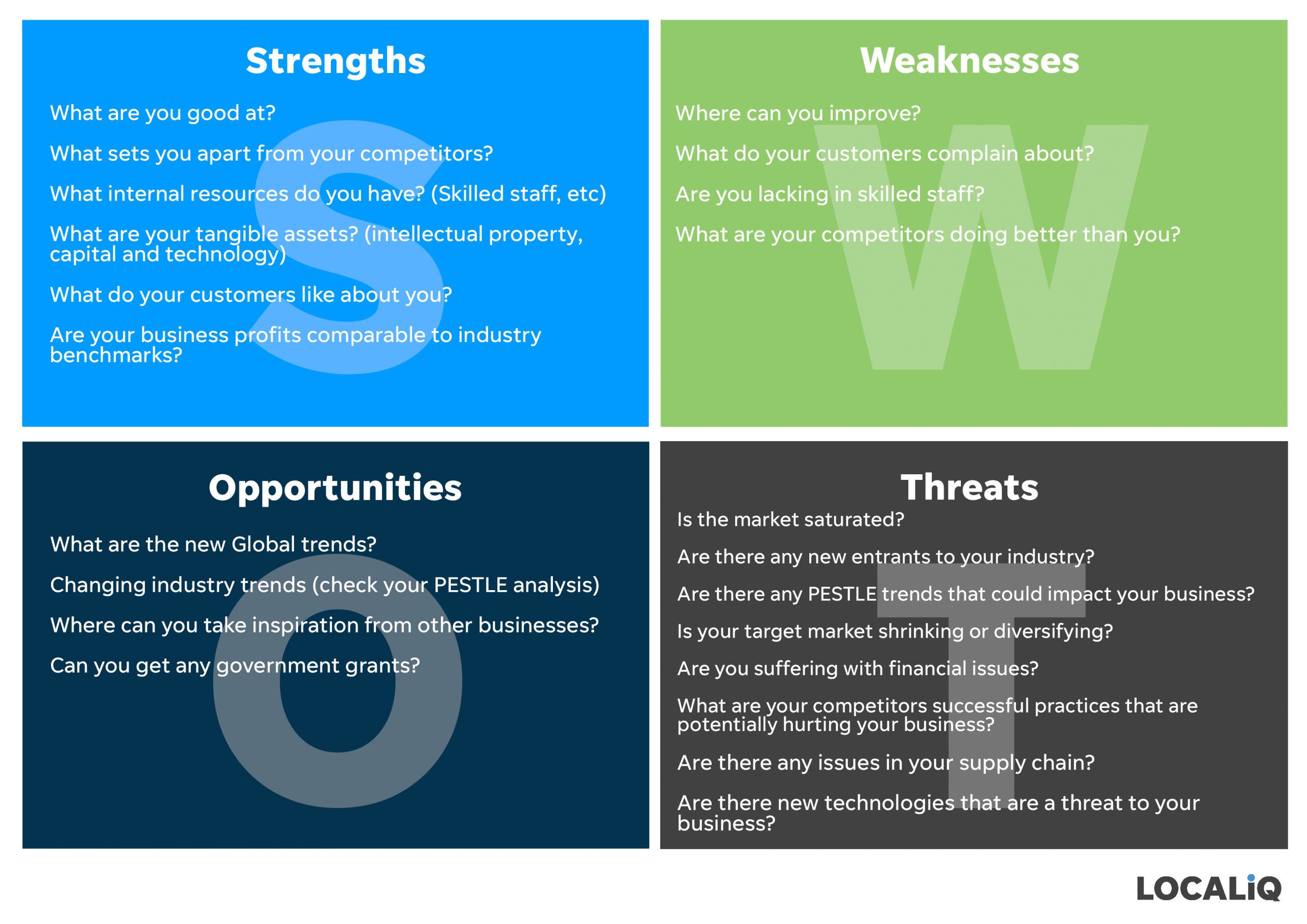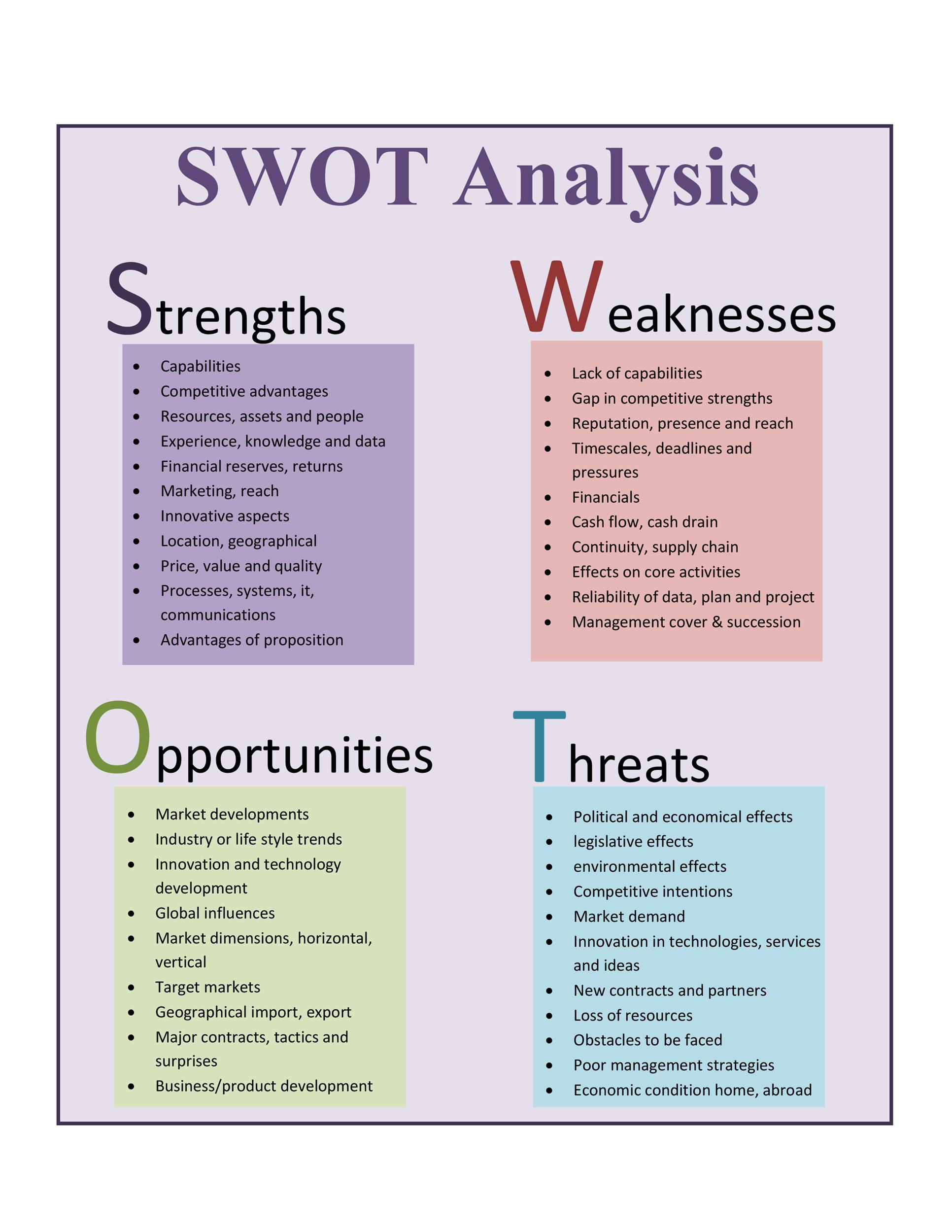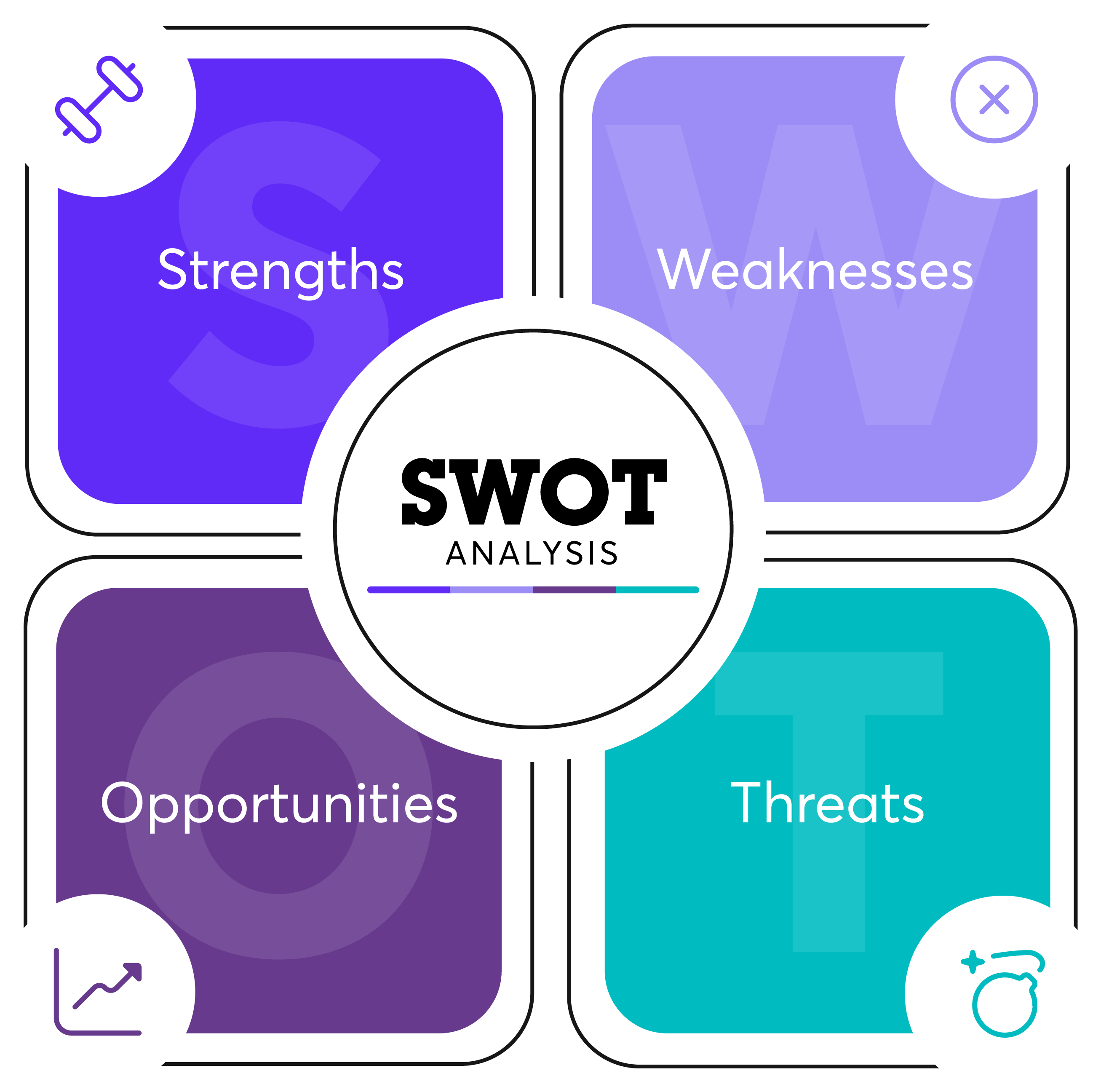What To Look For In A Swot Analysis
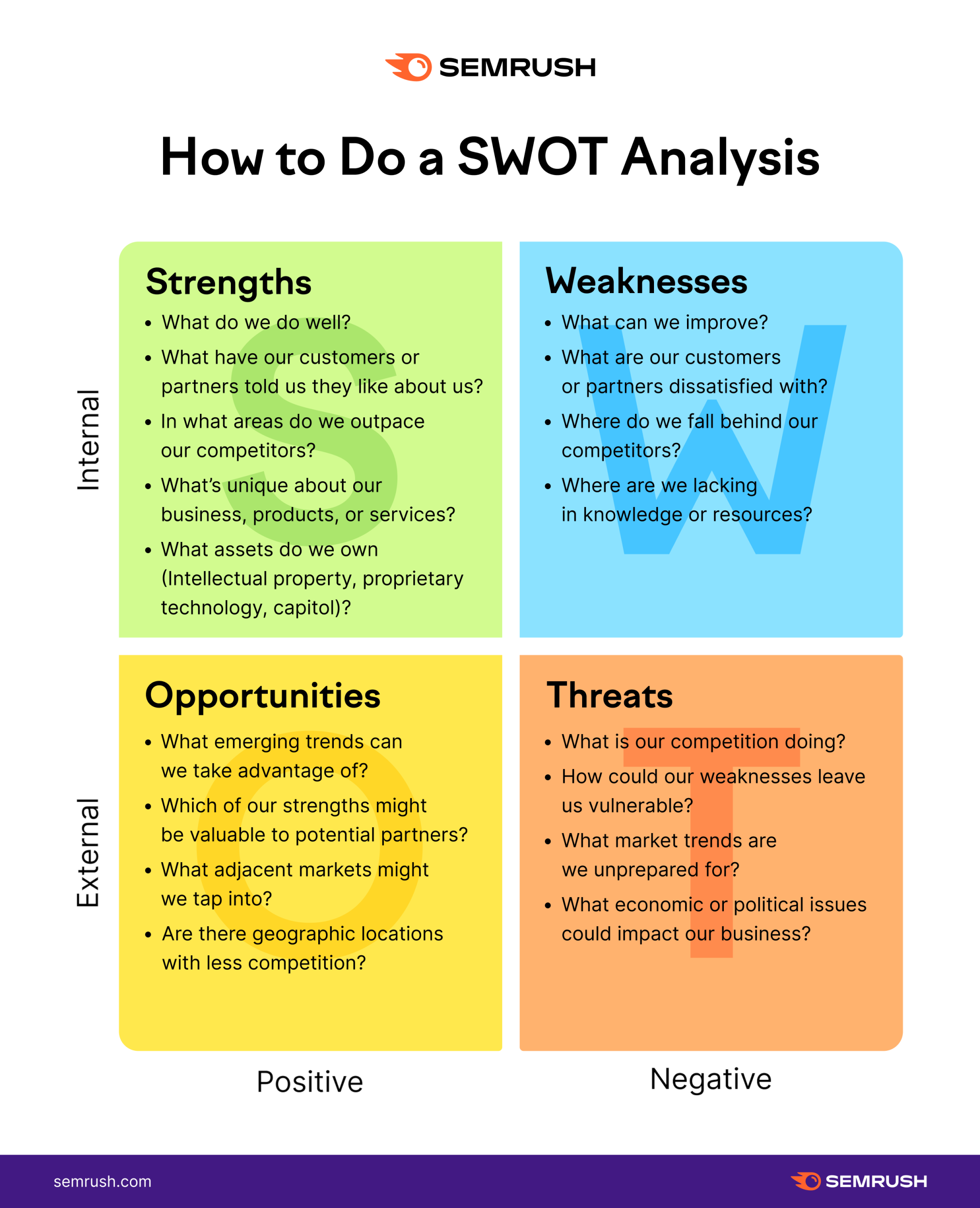
In today's relentlessly competitive business landscape, strategic planning is no longer a luxury, but a necessity. Businesses of all sizes grapple with identifying their strengths, addressing weaknesses, capitalizing on opportunities, and mitigating threats. At the heart of effective strategic planning lies the SWOT analysis, a deceptively simple yet profoundly powerful tool.
The SWOT analysis, standing for Strengths, Weaknesses, Opportunities, and Threats, is a framework used to evaluate a company's competitive position and to develop strategic planning. Mastering this analytical method requires a nuanced understanding of its components, avoiding common pitfalls, and ensuring actionable insights. This article delves into the critical elements of a robust SWOT analysis, guiding you on what to look for to unlock its full potential.
Identifying Internal Factors: Strengths and Weaknesses
The first step involves a rigorous internal assessment, dissecting the organization's capabilities and limitations. Strengths are the positive attributes, resources, and capabilities that give a company a competitive advantage. These could include a strong brand reputation, proprietary technology, skilled workforce, efficient operations, or superior financial performance.
Look for demonstrable evidence to support claims of strength. Avoid vague assertions, instead quantify strengths whenever possible, such as "increased sales by 15% year-over-year" or "95% customer satisfaction rating." Comparing your company's strengths against competitors provides crucial context and helps prioritize areas for further investment.
Conversely, weaknesses are internal factors that hinder a company's performance and competitiveness. These might include outdated technology, lack of skilled employees, poor cash flow, inefficient processes, or a weak brand image. A candid and objective assessment is paramount; avoid sugarcoating or dismissing weaknesses.
Don’t shy away from identifying areas needing improvement. Be specific about the nature of the weakness and its impact on the business. Quantifying weaknesses, such as "high employee turnover rate of 20%" or "operating costs 10% higher than industry average," allows for targeted solutions.
Analyzing External Factors: Opportunities and Threats
Beyond the internal realm, a thorough SWOT analysis necessitates a keen understanding of the external environment. Opportunities are external factors that a company can exploit to its advantage. These could include emerging markets, changing consumer preferences, technological advancements, favorable government policies, or economic growth.
Don't simply list broad trends; identify specific opportunities that align with your company's capabilities and strategic objectives. Consider the likelihood and potential impact of each opportunity, prioritizing those with the greatest potential return. Market research, industry reports, and competitor analysis can provide valuable insights.
Threats, on the other hand, are external factors that could negatively impact a company's performance. These might include increased competition, economic recession, changing regulations, technological disruptions, or shifts in consumer behavior. A proactive approach to identifying and mitigating threats is crucial for survival and long-term success.
Assess the probability and severity of each threat. Develop contingency plans to address the most pressing threats, such as diversifying product lines, hedging against currency fluctuations, or investing in cybersecurity. Consider scenario planning to prepare for a range of potential outcomes.
Ensuring Actionable Insights and Avoiding Common Pitfalls
A well-executed SWOT analysis is not merely an academic exercise but a catalyst for strategic decision-making. Ensure that the analysis leads to concrete action items and strategic recommendations. Prioritize the SWOT elements based on their impact and feasibility.
The SOAR analysis, focusing on Strengths, Opportunities, Aspirations, and Results, offers a more positive and future-oriented approach compared to the problem-focused nature of SWOT. Some argue that SOAR promotes innovation and collaboration more effectively.
However, several common pitfalls can undermine the effectiveness of a SWOT analysis. One is simply listing factors without prioritizing or analyzing their interrelationships. Another is conducting the analysis in isolation, without involving key stakeholders from across the organization.
Avoid generic statements that could apply to any company. A robust SWOT analysis should be tailored to the specific context of the organization and its industry. Regularly update the SWOT analysis to reflect changes in the internal and external environments.
Looking Ahead: Integrating SWOT with Other Strategic Tools
The SWOT analysis serves as a foundational tool that can be integrated with other strategic frameworks. For example, the insights from a SWOT analysis can inform the development of a Porter's Five Forces analysis, providing a more comprehensive understanding of industry dynamics.
Similarly, the BCG Matrix, which categorizes business units based on market growth rate and relative market share, can be used to allocate resources strategically based on the SWOT findings. By combining the SWOT analysis with other tools, organizations can gain a more holistic view of their strategic landscape.
In conclusion, a well-crafted SWOT analysis is an invaluable asset for any organization seeking to navigate the complexities of the modern business world. By focusing on demonstrable evidence, avoiding common pitfalls, and integrating the analysis with other strategic frameworks, companies can unlock its full potential and chart a course for sustained success. Remember to be critical, be honest, and be actionable. This powerful tool, used correctly, can be the difference between thriving and surviving.

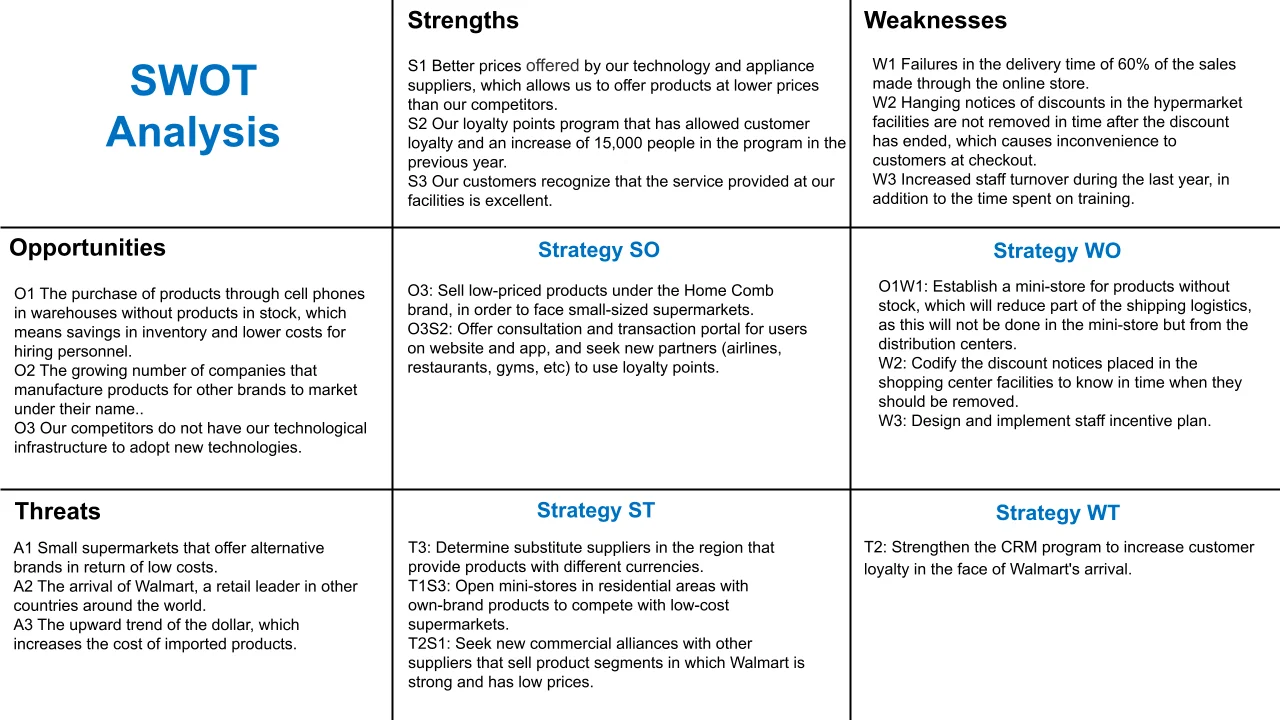
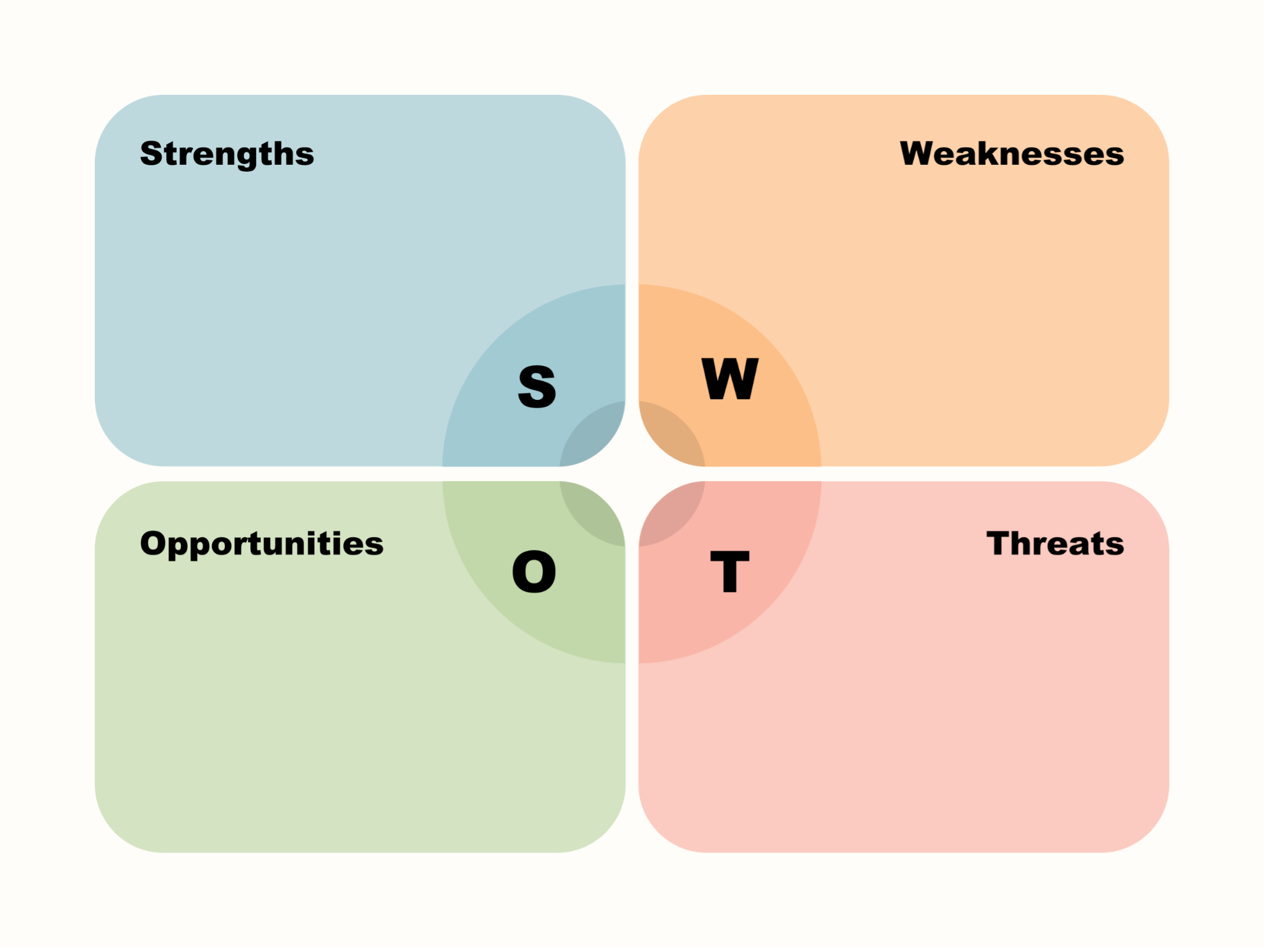
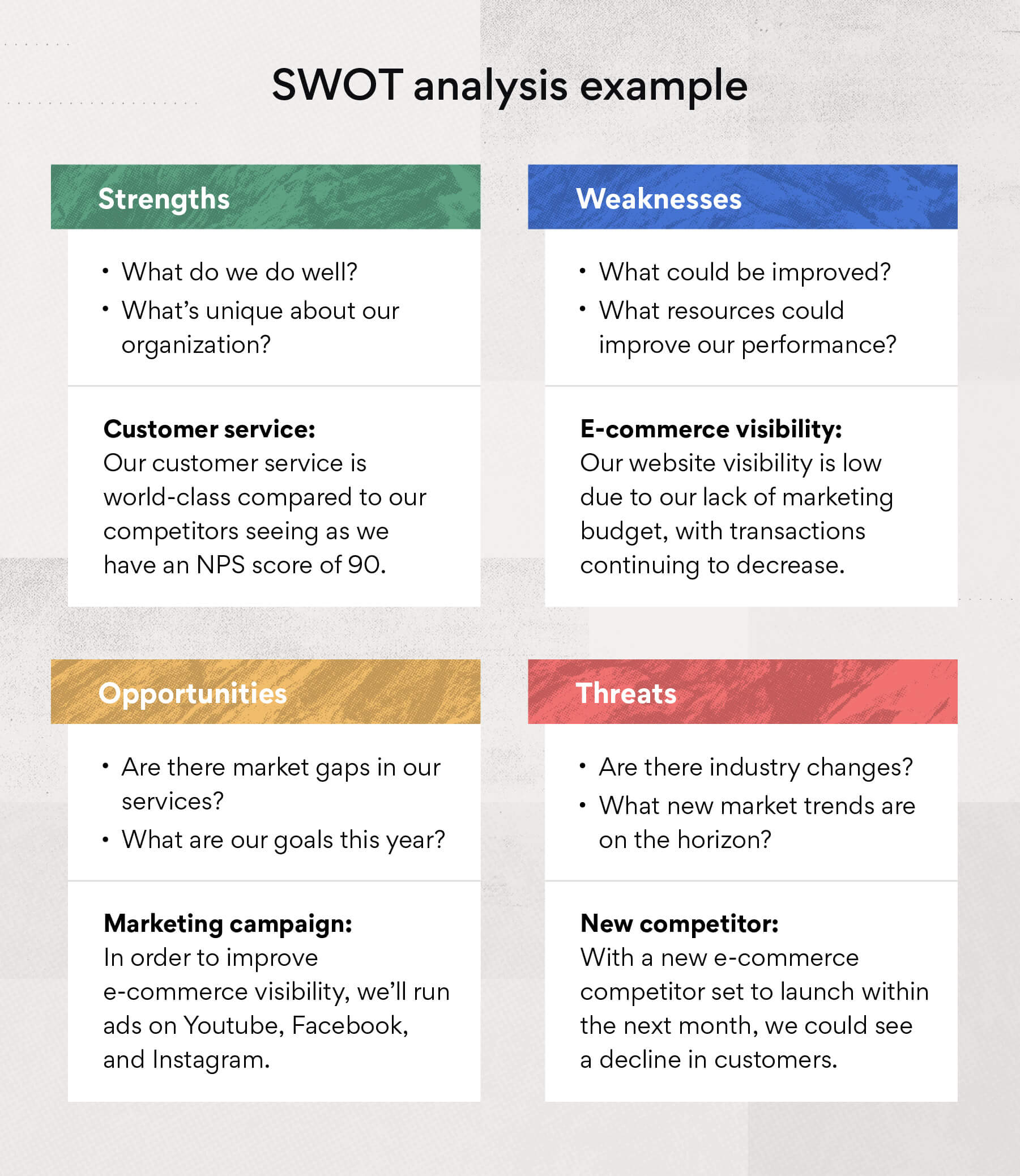
![What To Look For In A Swot Analysis SWOT Analysis: How To Do One [With Template & Examples] | Cristian A](https://blog.hubspot.com/hs-fs/hubfs/swot-analysis-example.jpg?width=3000&height=2000&name=swot-analysis-example.jpg)

![What To Look For In A Swot Analysis SWOT Analysis: Determine Your Marketing Strategy [+ Template]](https://gustdebacker.com/wp-content/uploads/2023/06/SWOT-Analysis.png)

